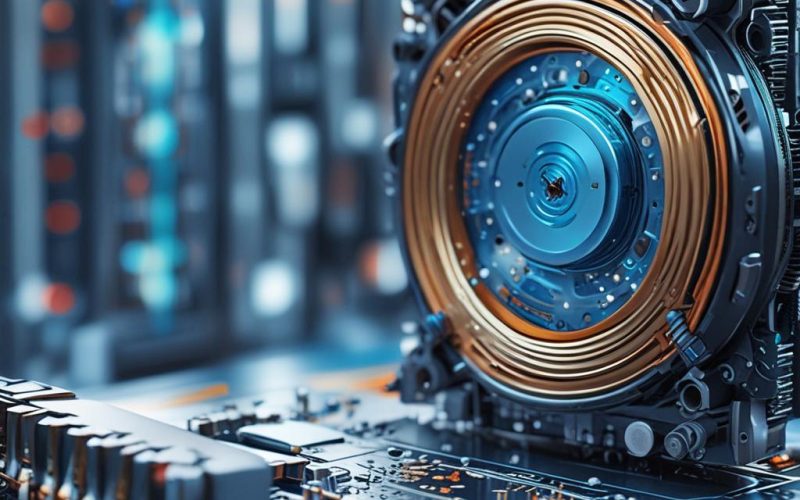Table of Contents Show
Machine learning (ML) is revolutionizing embedded systems, enabling smarter, more efficient devices that operate at the edge. From IoT sensors to autonomous drones, embedded ML powers real-time decision-making without relying on cloud connectivity. However, deploying ML models on resource-constrained hardware presents unique challenges—requiring lightweight, high-performance libraries optimized for low-power devices. As we move toward 2025, the demand for efficient ML libraries tailored for embedded systems continues to grow, driven by advancements in edge computing and AI acceleration. In this guide, we’ll explore the top machine learning libraries designed for embedded systems in 2025, their key features, and how to choose the best one for your project.
Why Machine Learning Libraries Matter for Embedded Systems?
Challenges of Running ML on Resource-Constrained Devices
Deploying machine learning models on embedded systems comes with significant constraints. Limited computational power and memory require models to be highly optimized to avoid slow inference or high latency. Power efficiency is critical, especially for battery-powered devices, where energy consumption must be minimized. Additionally, real-time processing demands—such as in autonomous robots or industrial sensors—necessitate ultra-low-latency performance.
Benefits of Optimized ML Libraries
Specialized ML libraries address these challenges by offering faster inference with reduced model sizes, often through techniques like quantization and pruning. These optimizations allow models to run efficiently on microcontrollers without sacrificing accuracy. Cross-platform compatibility ensures seamless deployment across different hardware architectures, from ARM Cortex-M to RISC-V-based systems.
Top Machine Learning Libraries for Embedded Systems in 2025
TensorFlow Lite
TensorFlow Lite is a lightweight version of TensorFlow designed for mobile and embedded devices. It supports model quantization and hardware acceleration, making it ideal for resource-constrained environments.
- Use Cases: Smart IoT devices, wearables, robotics
PyTorch Mobile
PyTorch Mobile is optimized for on-device inference, supporting model pruning and quantization to reduce computational overhead.
- Use Cases: Automotive systems, industrial sensors, smart home devices
ONNX Runtime
ONNX Runtime leverages the Open Neural Network Exchange (ONNX) format for cross-framework compatibility, enabling efficient inference with minimal overhead.
- Use Cases: Edge AI applications, drones, industrial automation
TFLite Micro
TFLite Micro is an ultra-lightweight library designed for microcontrollers (8-32-bit), with no OS dependency, making it suitable for bare-metal systems.
- Use Cases: Smart sensors, low-power IoT devices
MicroTVM (Apache TVM)
MicroTVM auto-optimizes models for embedded hardware, supporting quantization and hardware-specific optimizations.

- Use Cases: Autonomous robots, medical devices, industrial AI
Edge Impulse
Edge Impulse provides an end-to-end ML pipeline for embedded devices, including data collection, model training, and deployment.
- Use Cases: Predictive maintenance, anomaly detection, sensor analytics
How to Choose the Right ML Library for Your Embedded Project?
Factors to Consider
Selecting the right ML library depends on several factors:
- Hardware compatibility (MCU vs. SoC)
Comparison Table of Top Libraries
Comparison table for Comparison Table of Top Libraries
Below is a quick comparison of key performance metrics for the libraries discussed:
- TensorFlow Lite: High performance, supports quantization
Future Trends in ML for Embedded Systems
Advances in Model Compression & Quantization
Post-training quantization and pruning techniques will continue to enhance model efficiency, enabling more complex AI tasks on edge devices.
Hardware-Specific Optimizations
RISC-V, AI accelerators, and neuromorphic chips will drive further improvements in embedded ML performance.
Integration with Edge AI Ecosystems
Cloud-edge collaboration will become more seamless, allowing distributed inference for scalable AI applications.

Conclusion
Choosing the right ML library for embedded systems in 2025 depends on your project’s specific requirements, from hardware compatibility to power efficiency. Whether you need ultra-lightweight solutions like TFLite Micro or end-to-end deployment with Edge Impulse, the right tool can significantly enhance your embedded AI capabilities. As edge computing evolves, these libraries will play a crucial role in shaping the future of smart, connected devices.

FAQs
Q1: What is the smallest ML library for microcontrollers?
A: TFLite Micro is one of the most lightweight options, designed for 8-32-bit microcontrollers.
Q2: Can I use PyTorch on an embedded device?
A: Yes, PyTorch Mobile allows running PyTorch models on mobile and embedded systems.
Q3: How does ONNX Runtime improve performance on embedded devices?
A: ONNX Runtime optimizes models for inference with minimal overhead, making it efficient for edge devices.
Q4: Is Edge Impulse suitable for custom hardware?
A: Yes, Edge Impulse supports various MCUs and SoCs, allowing deployment on custom hardware.
Q5: What are the best libraries for real-time embedded AI?
A: TFLite Micro and ONNX Runtime are excellent for real-time applications due to their low latency.




